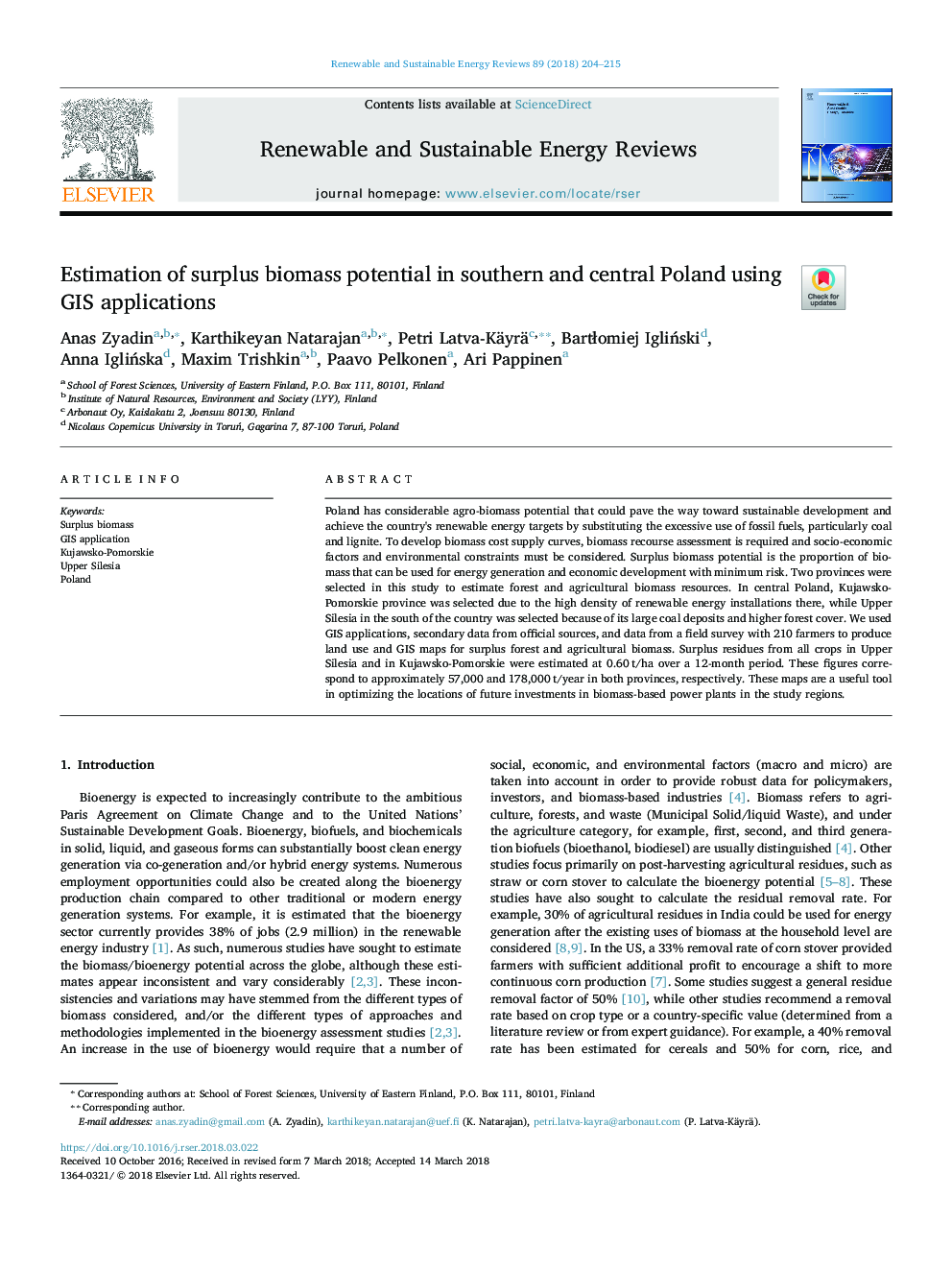| Article ID | Journal | Published Year | Pages | File Type |
|---|---|---|---|---|
| 8111379 | Renewable and Sustainable Energy Reviews | 2018 | 12 Pages |
Abstract
Poland has considerable agro-biomass potential that could pave the way toward sustainable development and achieve the country's renewable energy targets by substituting the excessive use of fossil fuels, particularly coal and lignite. To develop biomass cost supply curves, biomass recourse assessment is required and socio-economic factors and environmental constraints must be considered. Surplus biomass potential is the proportion of biomass that can be used for energy generation and economic development with minimum risk. Two provinces were selected in this study to estimate forest and agricultural biomass resources. In central Poland, Kujawsko-Pomorskie province was selected due to the high density of renewable energy installations there, while Upper Silesia in the south of the country was selected because of its large coal deposits and higher forest cover. We used GIS applications, secondary data from official sources, and data from a field survey with 210 farmers to produce land use and GIS maps for surplus forest and agricultural biomass. Surplus residues from all crops in Upper Silesia and in Kujawsko-Pomorskie were estimated at 0.60â¯t/ha over a 12-month period. These figures correspond to approximately 57,000 and 178,000â¯t/year in both provinces, respectively. These maps are a useful tool in optimizing the locations of future investments in biomass-based power plants in the study regions.
Keywords
Related Topics
Physical Sciences and Engineering
Energy
Renewable Energy, Sustainability and the Environment
Authors
Anas Zyadin, Karthikeyan Natarajan, Petri Latva-Käyrä, BartÅomiej IgliÅski, Anna IgliÅska, Maxim Trishkin, Paavo Pelkonen, Ari Pappinen,
